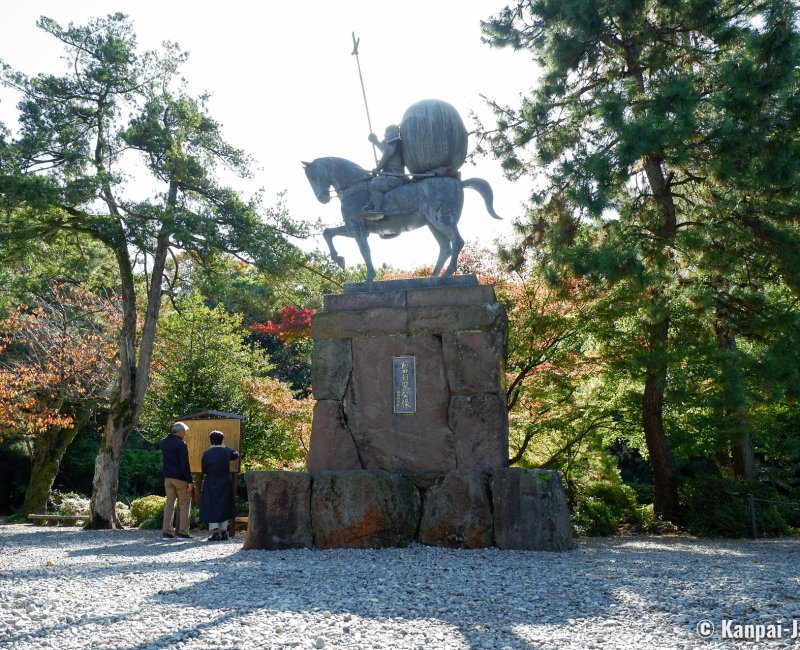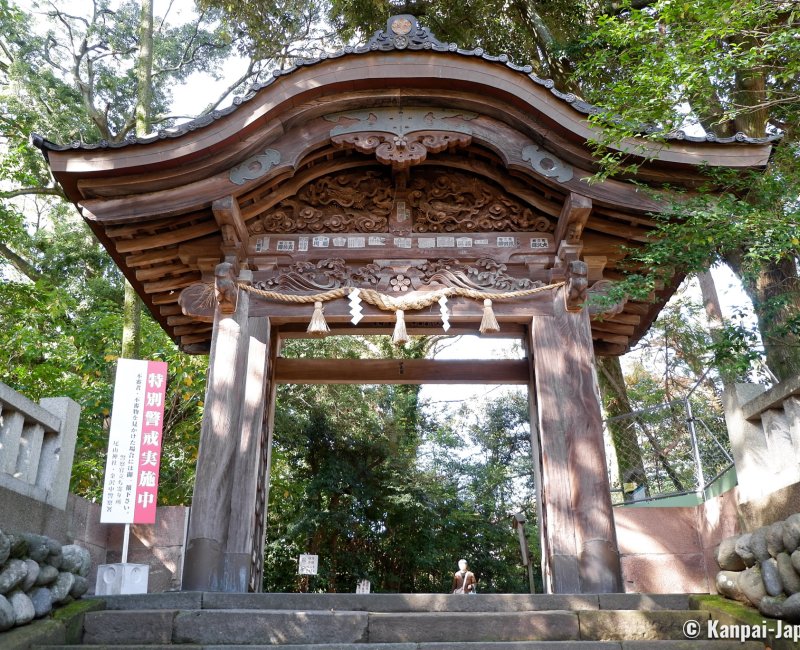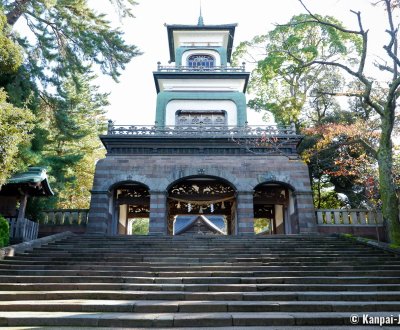Oyama-jinja
The Shrine Dedicated to Toshiie Maeda
Oyama-jinja is a Shinto shrine in Kanazawa, Ishikawa prefecture in Japan. It is dedicated to the memory of Toshiie Maeda (1538 – 1599), the first lord of the Maeda Clan to rule on Kanazawa’s area's former domain of Kaga, until 1868. Its main gate Shinmon features a unique architecture with Chinese and European influences.
Built in 1599, the shrine was initially named Utatsu Hachiman-gu and located at the foot of Mount Utatsu, in the east of Kanazawa City. It was only in 1873 at the beginning of the Meiji Era that it was moved to its current location at the west of the Castle 🏯’s park and renamed Oyama-jinja.
The shrine is easily accessible by bus from the JR station, thanks to its convenient location: between Nagamachi samurai district and Kanazawa-jo. The visit starts from the Shinmon gate, from west to east, and offers a direct access to the Castle’s park thanks to the bridge and the Nezumita-mon gate, the last rebuild parts inaugurated in July 2020.

Toshiie Maeda, the noble warrior who became a lord
Toshiie Maeda (1538 - 1599) was a long-time retainer of the great warlord (daimyo) Nobunaga Oda (1534 – 1582), a historical figure of the Sengoku period (1467 - 1615), considered as one of the 3 unifiers of the country. A simple infantry captain in the beginning, Toshiie quickly worked his way through the officers ranks and won important battles:
- Nagashino in 1575; and,
- Tedorigawa in 1577.
Toshiie Maeda became daimyo in 1583 and was the first lord of his lineage to rule over the Kaga domain. After his death, his eldest son Toshinaga decided to dedicate Oyama-jinja shrine to his memory, as well as to his mother’s, Toshiie beloved wife.

The unique architecture of Shinmon Gate
The entrance of the small Shinto enclosure is particularly highlighted by a quite steep stone stairway and the main gate called Shinmon, displaying an unusual architecture. Built in 1875, it results from the collaboration of Dutch designer Holtman and Kanazawa master carpenter Tsuda Kichinosuke. The gate is consequently a unique structure of Japanese, Chinese and European inspirations. Each level shows a different design with:
- At the base, 3 red bricks arches for the visitors to go through, and,
- At the summit, a tower decorated with colored stain-glass that remind both of a church and a lighthouse.
Stop a moment at the gate to admire its beautiful wood carving.
The shrine’s inner courtyard is home to the worship pavilion haiden and the main hall honden. On the right, the statue of Toshiie Maeda, clad in armor and riding a horse, reminds of the spirit enshrined here and of his importance in the city’s history.
The visit ends by Oyama-jinja’s peaceful gardens and especially the one called Gakki no Niwa, meaning the "garden of the music instruments". It was created by Kobori Enshu (1579 – 1647), a famous gardener and architect of the Azuchi Momoyama period (1568 - 1600). The elements and the shapes constituting the garden are said to be directly inspired from traditional music instruments used in the Gagaku, an ancient artistic and musical trend in Japan.
The Higashi Sanmon Gate marks the exit of the shrine’s grounds, and is smaller and entirely made of raw wood. Once standing in the enclosure of Kanazawa Castle, this gate survived many fires 🔥 and its longevity is thought to be due to the 2 spilling-water-dragons sculpted on its upper part.

